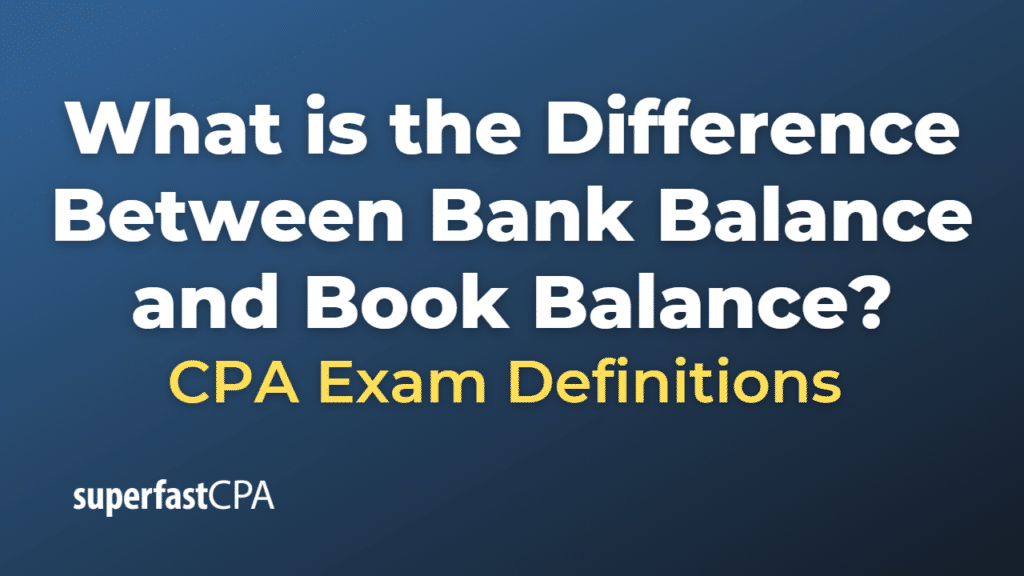Difference Between Bank Balance and Book Balance
The terms “bank balance” and “book balance” are used in the context of a company’s cash management and reconciliation of its bank statements.
- Bank Balance: This is the amount of money in a company’s bank account, according to the bank. The bank balance is the figure provided by the bank on the company’s bank statement, and it represents the record of all transactions processed through the account by the bank. This balance can change throughout the day as funds are deposited into or withdrawn from the account.
- Book Balance: This is the amount of money that the company’s own records show it has in its bank account. The book balance is recorded in the company’s general ledger and is based on the company’s record of deposits made and checks issued. It does not change throughout the day but is updated periodically based on the company’s record of its transactions.
Differences between the bank balance and book balance can occur due to checks issued but not yet presented to the bank, deposits in transit (deposits made but not yet reflected by the bank), bank fees, interest income, or errors in recording transactions. Reconciling these two balances is an important process, usually referred to as “bank reconciliation,” to ensure the accuracy of the company’s financial records.
Example of the Difference Between Bank Balance and Book Balance
Suppose that at the end of May, according to your company’s ledger (your “books”), your company has a balance of $10,000 in its bank account. This is your book balance.
Now, when you receive the bank statement, the bank indicates that the ending balance for May is $11,500. This is your bank balance.
The difference between the bank balance and book balance is $1,500. There are several reasons this difference may exist. Here are a few possible scenarios:
- Outstanding Checks: Your company may have written checks totaling $1,000 that have not been cashed or cleared by the bank yet. Your book balance would have been reduced when the checks were issued, but the bank balance doesn’t go down until the checks are cashed.
- Deposits in Transit: You may have deposited $2,000 into the bank just before the end of May, and that deposit didn’t show up in the bank balance until June. Your books would show the deposit, but the bank wouldn’t show it until the following statement.
- Bank Fees or Interest: The bank may have deducted a $500 service fee that you haven’t recorded in your books yet. Or, the bank could have added interest income to your account that you haven’t recorded.
So, if you account for these, the reconciled balance would be calculated as follows:
- Book balance: $10,000
- Add: Deposits in transit: $2,000
- Subtract: Outstanding checks: $1,000
- Subtract: Bank fees not recorded: $500
The adjusted book balance now equals the bank balance: $10,500, matching the bank statement.
This process of adjusting the book balance to match the bank balance is known as bank reconciliation. It’s a critical control to ensure that cash records are accurate.













